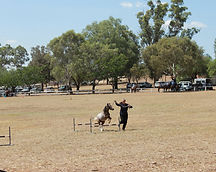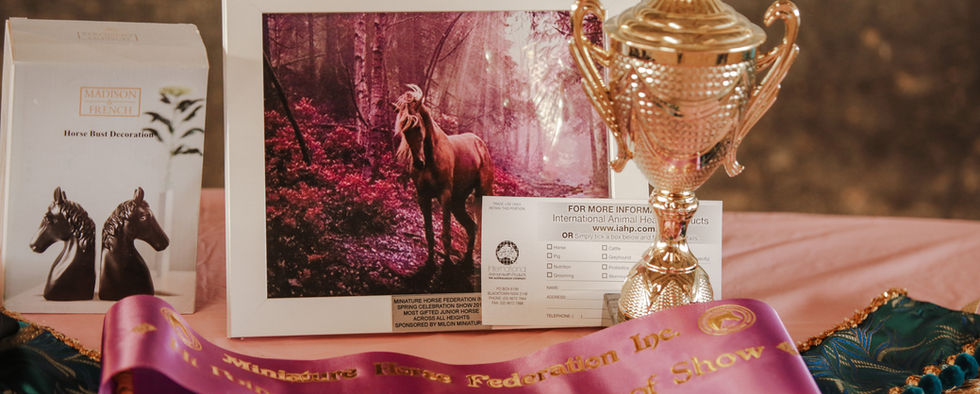
Miniature Horse Federation Inc.








JUNIOR WORKING HUNTER
Horses must be 24 months of actual age and under 48 months of actual age to compete in this event.
Introduction
Working hunter classes are an example of a horse out on the hunting field. Exhibits are judged on jumping/course faults PLUS style, manners, way of going, speed, control and maintaining a consistent gait.
The working hunter class is to be executed in three separate phases:
1) a jumping phase
2) a workout phase
3) a conformation phase
Working Hunter Phases
-
Jumping Phase
Horses are required to negotiate a course comprising of a minimum of four jumps and no more than six standard rail jumps, to be run at a controlled hunting pace. Each course should include a change of direction.
2.Workout Phase
After the jumping Phase all Horses together will circle the judge at a walk and then trot to show manners, movement type and general impression.
3.Conformation Phase
Horses will then be lined up for the judge’s inspection for conformation and type.
Jumps should be at a minimum of 20 feet apart and no higher than:
8 inches for Miniature Horses
10 inches for Small Horses
12 inches for Little Horses
Start and finish lines should be at least 12 feet from the first and last obstacle. A fluid smooth round at an even pace earns high points for style, manners, and presence. The course should be completed at a trot for Junior Horses.
Marks
Overall allocation of marks:-
Jumping 40 points
Manners/Style 20 points
Workout Phase 30 points
Conformation Phase 10 points
Jumping Phase Marks
-
Each competitor begins their round with 40 marks
-
From this mark points are deducted for the following faults: -
-
Knock down – 10 points
-
First refusal or run out – 10 points
-
Second refusal or run out – 10 points
-
Third refusal – elimination
-
Clipping but not dislodging a rail – 2 points
-
-
A mark out of 20 is awarded for manners, style, pace, control etc whilst jumping.
Workout Phase Marks
-
A mark out of 30 will be given for this phase based on the judge’s assessment of the horse’s manners, movement, type, and general impression
Conformation Phase Marks
-
The judge will award a final mark out of 10 to each horse for their conformation and type.
The marks from all three phases will be added together. The horse with the highest score will be deemed the winner. If there are two horses with the same score, the horse with the highest score in the jumping component will be deemed the winner. If both scores are the same, it will then go to highest score in Workout phase and again if tie will go to Conformation Phase until a winner can be determined. The judge’s decision will be final.
Elimination
-
Handler jumping the jump with the horse
-
Horse getting free from the handler
-
Fall by the Horse
-
Exhibitor disrespectful towards judge
-
Any unacceptable negative behaviour of the horse towards the handler – biting, striking ete
-
The horse being considered by the judge to be unfit, too stressed, or unsound to compete.
-
Any unnecessary aggressive or abusive behaviour from the competitor towards the horse
-
Leaving the arena without the judges or stewards permission
Equipment
• Halters can be made of leather, plastic or webbing that sits flat against the horse’s nose. No buckle is to be on the noseband. Rope halters are allowed as long as the knots are not positioned to be used as pressure point areas on the horse’s head and face, for example knots should not be on the bridge of the nose they can be to each side. Knots cannot be behind the poll.








